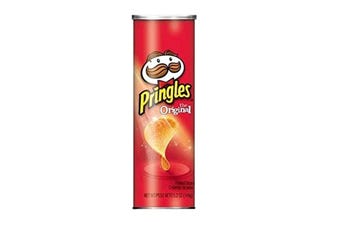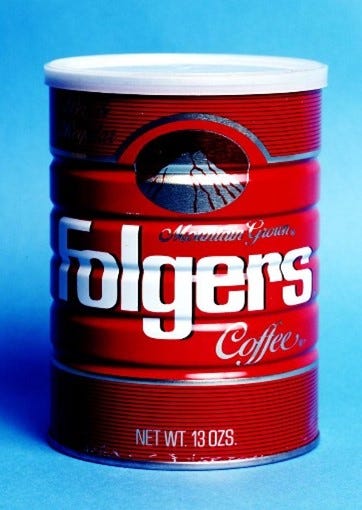
Consumer research. Many of the clients The Pull Agency conducts market research for are Research Virgins. As someone who spent many years working in big brands that spent a fortune on research, I get great satisfaction from our client research projects. They are the best sort of research: Conducted on a relative shoestring to answer urgent brand questions within tightly managed brand development projects. They always provide vital insights to strengthen brand performance.
Value in research spans a huge range as Mark Ritson has pointed out:
“I don’t believe there’s any correlation between how much money you spend on research and how much insight and diagnosis you subsequently receive. I’ve seen some complete idiots spend $600,000 on research and produce nothing, and I’ve seen a band of hardy, completely unfunded marketers go out and understand the universe for zero.”
I cut my marketing teeth at Procter & Gamble. This being quite a while ago when UK HQ was in Newcastle upon Tyne. There was a shop on the company campus in Gosforth where you could buy discounted brands like Pampers & Ariel, but also US exotica like Folgers coffee and – delight of delights – the highly addictive Pringles crisps (sold by P&G to Kellogg’s in 2012).

On the other hand I was less sure about Folgers coffee (acquired from P&G by J.M. Smucker in 2008) – although the re-usable cans were fabulously handy for storing knick-knacks .

P&G divested of its food brands over this period, and by 2014 they were all gone. It was part of a programme aimed at getting out of relatively commoditised lower margin categories to focus more on higher margin health-tech businesses.
But no one working in Gosforth at that time had any doubts about Pringles. They were so popular that there was a sort of thriving black market at that time on Tyneside. Every employee had their ration of Pringles spoken for. If they and their family didn’t personally like them – no problem – they could get a good premium for them with sales to friends or down the pub.
No-one at P&G HQ back then could really understand why the company didn’t launch Pringles in the UK. Of course eventually they did. But to my horror as an inside observer at the time, that was only after doing full UK market research and a test market to boot – as was the P&G SOP in the day.
So Qual and Quant research was done over a period of several months, and arrangements made with all the major grocery retailers to stock Pringles in the ITV Border region to create the test market, and ads spaces were bought on that channel.
Four months after Pringles went on test market, P&G crunched the numbers and prepped for the UK launch. Planograms were created showing (obviously adventurous amounts) of shelf-space in grocery retailers, and presentations made to the these chains to secure national distribution. There was just one problem: With about 6 months’ notice, P&G’s competitors had stolen a march on them. The shelves were full of own-label and branded Pringles look-alikes.
Of course P&G did eventually get Pringles on the crowded shelves. And ultimately, through legendary P&G product superiority - and probably a bit of patent law - they were the only tubed crisps on the shelves.
US consumers had been addicted to Pringles and there was nothing remotely like them in the UK market. P&G had the logistics and existing retailer relationships to get the brand in stores overnight. With the size of TV spend they used for all brand launches, no UK retailer would have said no. But instead they signalled their intent in a way that allowed more agile players to get there first. Sure they won in the end, but all the research they needed to make a decision existed in that company shop in Gosforth.
So there is a good lesson for brands that don’t have a six-figure sum available for market research. Despite huge respect for P&G’s marketing prowess – and of course those disciplined SOPs - what drove me nuts at times at P&G was the lack of imagination and a willingness to follow entrepreneurial instincts. They had to do everything by the book. This was fairly normal at the rather risk-averse time for the business, and later recognised - as initiatives were created to try and encourage a more entrepreneurial mindset in the business.
The learning for me, was that in any given situation just the right amount of research is required (sometimes none). Big brands, big budgets and big teams (not to mention multiple national markets) beget massive, expensive lengthy research programmes. Smaller, more agile brands should take advantage - not by saving money by not doing research - but by doing only what they need to to get answers to the most important questions.
This long ago learnt lesson burnt quite deep in my psyche, and is always in the back of my mind when discussing market research with clients. It was also a key driver in motivating us to offer clients engaged in brand projects at the Pull Agency cost-effective market research.
These are the rules we follow and apply to all brands whatever the size.

1. Don’t research what you already know – sounds obvious, but see above. Before you create a research brief find out what’s already known – ask around!
2. Ruthlessly create a research brief. Make sure everyone involved understands and agrees with the objectives, and areas of discovery. Get everyone involved in the questions you want to ask – and then cut everything back to the essentials to keep the research manageable and within costs. Long surveys with poor completion rates cost you more.
3. Don’t blindly follow the ‘Quant follows Qual’ rule. Sure, Qual can inform Quant, but it can also work the other way round. Quant can identify what themes emerge that can be only explored in depth in Qual.
4. You don’t have to do Qual & Quant. It depends what you need to learn. Do you need a statistically significant reading? or to gauge more of an emotional response?
5. Sometimes you need a quick or cheap steer. You still have a lot of options: Go and watch shoppers. Arrange a set of phone interviews with brand and (if you can find them) category buyers. Talk to distributors and retailers. None of these things is invalid. You just have to be careful to decide how much weight you can give to what you learn.
Finally, time is money as P&G found out with Pringles. Research the Pull Agency does is almost always as part of a brand development project. Clients benefit from the deep immersion our consultants have in client brands, creating a research brief, constructing and executing the research and then working on brand strategy. That way we live and breathe your brand, agency briefings are minimal and we can often deliver a whole brand project in the same time it would take to brief-in a research house, run the research and report the results.
So if you want to Healthcheck™ your brand, do brand tracking to calibrate your brands level of awareness or consideration vs its peers, understand your customers better, or learn more about category buyers contact us. Not first and foremost because we are researchers – but because first and foremost we are brand managers. We will ensure you research only what you really need to know.
Another Perspective. Kathrin Rodriguez-Bruessau worked at Colgate Palmolive up to joining the Pull brand strategy team in 2021. What lessons does she take from her career that apply to smaller brands?
Call it research or insight - The important take away here really is much more about spending appropriate time on your situational analysis: take stock of where your strengths, weaknesses and opportunities are before you get going. Do you know who your current and potential future consumers are? Do you really understand the path to purchase? What can set you apart from your competitors? It is essential to keep an unbiased perspective on this and be honest about where you are ahead or behind the category or competitors. Diagnostics are essential – without understanding what your current position is, any of your strategies and initiatives will be subject to random success or failure. So don’t skip this stage just because you don’t have a big research budget. There is a lot you can analyse without having to spend big. You can get insights and inspiration through many other avenues:
- A well run workshop starting with what you do know can help crystallise strategies as well as prioritise crucial insight gaps. It’s also a great way to generate commitment across the business even when you may not have data to back you up.
- Be curious and get external – don’t attempt to resolve everything from your desk: listen and talk to friends & family, watch and chat to shoppers in store, run a small scale test and learn, collaborate with a retailer, look at reviews and feedback through your consumer care line, etc.
Before requesting any ad hoc studies, at Colgate, best practice was to start first by identifying and defining your business challenges and assessing if you really have insights gaps to address them. Ideally do this with a cross functional group of colleagues. Keep checking your “I wish I knew” list against what the insight is supposed to help you achieve. Beware: curiosity can lead you down a rabbit hole of wanting to find out everything and anything. Particularly when you don’t have massive research budgets, ask yourself whether the research answers will truly help you address your challenge and if it can lead to actionable findings.
I also whole heartedly agree with Chris not to forget your gut instinct. I think most of us can remember projects that got researched at length despite the majority of brand marketers “knowing” where the issues or opportunities were even in absence or despite availability of research. Stay clear of studies that are mostly run for internal politics. Be honest with yourself – if you know hand on heart that the research is not likely going to give you the answers you hope for, the money is better spent elsewhere. This leads me to my final point:
Try and carve out a small amount of spend that you invest in annual brand tracking. This will provide precious data to help steer against your business overly focussing on short term sales activation just because it can be measured in ROI. ROI is great and has its place, but it will only tell you part of the story. To win in the long run (I am talking 3 years plus), you need to measure brand health, for example awareness and some key attributes that define your brand. Luckily, these don’t shift fast, so some focussed annual equity tracking is all you need.
Another Perspective. Ben Waterhouse is The Pull Agency’s head of digital marketing. How can brands take advantage of digital techniques to cost-effectively gain consumer insights?
The rise of digital gave birth to a plethora of tools, plugins, programmes and countless other neat bits of kit with which brands could track, monitor and analyse their consumers/would-be consumers/competition/pretty much anyone until the cows come home.
But, as the title of this piece dictates I must, lets focus on some of the more cost-effective insight techniques and opportunities digital provides us.
And, because it doesn’t get more cost effective than ‘free’, let’s start with Google’s own keyword planner. Typically used when trying to scope out campaigns or media buys, this can also be an incredibly powerful tool when looking to understand consumer habits. By simply plugging in a few key words and phrases related to your brand or product, a brand marketer can soon find themselves armed with a CSV file positively brimming with related terms that real users (and for users, read potential customers) are actually typing. These can reveal a number of things, not least the more popular terms. But, dig a little deeper and you’ll find you have some genuine insight into how customers research products, look to solve a problem, or simply what they have to say about your products or brand. For an extra bit of fun, replace any keywords or terms you entered in the planner with those of your competitors for additional insights.
In much the same way, a simple use of the search bar on your favourite social network can also reveal a great deal about what consumers think, feel and say about your brand and competitors. And while we’re on the subject of using social media to glean insights, don’t underestimate the power of simply asking your own audience. Either with things like the ‘ask me anything’ question sticker on Instagram stories, or within other content, solicit opinions from your follower base – it won’t cost you a penny.
If these are some rather low-cost, quick and dirty routes to the thoughts and feelings of your consumer, there are some more high-tech solutions on the market today that brands could do well to explore. Take DAIVID for example, and what they term #CreativeEffectiveness. Using a bunch of clever tech I won’t even pretend to fully understand, the software analyses your video content and creative to measure how effectively it is at capturing attention, evoking emotion and ultimately driving action among your target audience. Using this technology to understand and measure what worked and what didn’t with past campaign performance could save brands plenty in the long run. This approach to what they term.
And when it comes to insight and brand tracking, another tool to keep an eye on is Tracksuit, the Mark Ritson-backed platform that’s shaking up the world of brand tracking. No, really.
Tracking those all-important metrics like awareness, consideration and preference against a set of competitors, the Kiwi-based startup offers brands more affordable access to insights, with an approach that looks forwards, not backwards. It’s one that its founders claim is 10X cheaper than current standard methods!
Launched in 2021, the software-as-a-service product is a great fit for growing brands who appreciate the value of strong insights, especially those focused less on immediate conversions and more on long-term brand building.
Tracksuit and DAIVID are just two examples of a burgeoning new-wave of smart tech solutions helping smaller brands gather insight at a cost that isn’t prohibitive and we’d encourage any brand manager to seek out these and others like them
Little-known fact: When legendary Procter & Gamble CEO (1963 to 2003) John Pepper was asked what were the most important characteristics in a P&G brand manager he replied: “Thoroughness and self-discipline”. Funnily enough he didn’t say “Thinking outside the box”
Posted 4 April 2023 by Chris Bullick